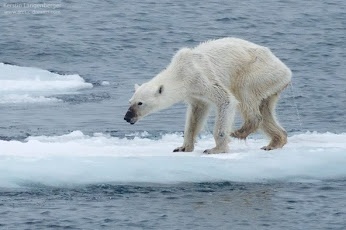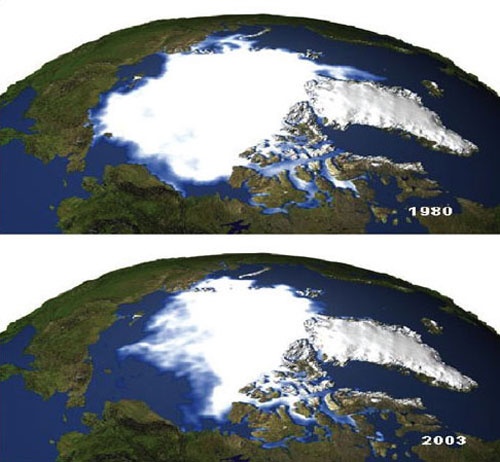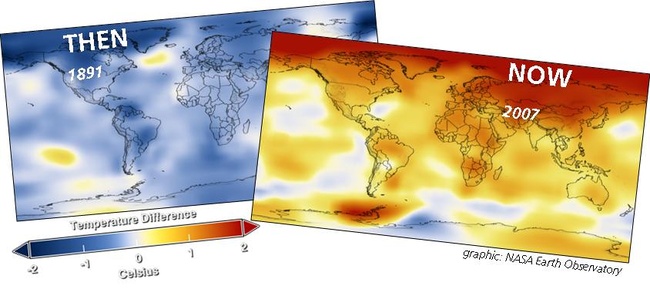Climate Change (Grade 5)- Blended Lesson Plan

Descriptive Information:
This lesson is designed for fifth grade students. It focuses on the “big idea” that humans depend on, are shaped by, and affect the earth’s climate. Students will first take an in-depth look into the earth’s climate, the roles humans play in climate changes, and the impacts the changing climate will have on humans. Then, they will propose solutions to minimize the consequences of climate change on our earth and its people.
Scope:
- Four 40-Minute Lessons
21st Century Skills:
- Digital Literacy Skills
- Learning and Innovation Skills
Big Ideas:
- Interdependence
- Human impact
- Cause and Effect
Essential Questions:
- How does life on Earth depend on climate?
- How is life on earth shaped by climate?
- How have we as humans impacted the earth’s climate?
- What are the consequences of the earth’s changing climate?
- What can we, as responsible citizens, do to help reduce the effects of the earth’s changing climate?
Performance Assessment:
Students will demonstrate their knowledge and understanding of the theme, “Humans depend on, are shaped by, and affect the earth’s climate” by creating a digital presentation. The presentation will be measured for mastery of the competencies based on the requirements of the rubric.
Diagnostic (Formative) Assessments:
Based on responses to each lesson's exit ticket, determine which students are able to move on independently during the following lesson and which students will work with the teacher in a small group for extra support.
Academic Vocabulary:
- Global Warming
- Atmosphere
- Greenhouse Effect
Concept Competencies:
- Students will demonstrate their knowledge and understanding of the theme, “Humans depend on, are shaped by, and affect the earth’s climate.”
- Students will describe cause and effect relationships of humans and the earth’s climate.
Skills and Content Competencies (Based on Michigan 5th Grade Content Expectations):
- Students will describe the origins of pollution (car exhaust, industrial emissions, acid rain, and natural sources) and how pollution impacts habitats, climatic change, threatens or endangers species.
- Students will analyze the relationship between the emissions of carbon dioxide, atmospheric carbon dioxide levels, and the average global temperature over the past 150 years.
- Students will list the possible causes and consequences of global warming.
Day 1 of Lesson (40 minutes):
Objective: I can explain the difference between weather and climate.
Engage:
Activating Prior Knowledge-
- (FtF) Display the following for the students: The British geographer Andrew John Herbertson once wrote: “Climate is what on average we may expect. Weather is what we actually get.”
- (FtF) Have students turn and talk with a partner about what they think this quote means. Tell them to be ready to share one of their thoughts with the class.
- (FtF) Let a few students share out their thoughts, then explain that the students will be investigating the difference between climate and weather today. The first activity will be watching a short video and answering a question both at the beginning and end of the video.
Explore:
- (Online) Have the students watch the video “Weathervs. Climate Change” and answer the questions as they go.
- (FtF) Follow the plans for the following whole-group activity: “What’s the Difference BetweenWeather and Climate?”
(Online) Wrap Up:
Exit Ticket- Students
reflect on today’s lesson by answering the following question:
- Give an example of weather and an example of climate that you’ve experienced in your life.
Homework- Watch the following video podcast to prepare for tomorrow’s lesson:
Day 2 of Lesson (40 minutes):
Objectives: I can explain what is causing climate change, and I can propose ways to help solve the issue.
Check-In-
- (Online) Students self-assess their current understanding of what is causing climate change:
- I could teach it to a friend
- I understand it.
- I need help.
- I didn’t complete it.
2. (FtF) Students who were identified as needing extra support based on the day 1 formative assessment data, along with students who selected options 3 and 4 above will meet in a small group with the teacher for extra support. Students who selected options 1 and 2 above go on to complete the next activity independently.
Engage:
- (Online) Students post a response to the following discussion thread:
What are the differences you notice in the pictures below, and what do you think has caused the views to change so much?


2. (Online) Students must respond to at least two other students’ posts.
Explore:
- (Online & FtF) Form groups of four students, giving each student a number 1-4. Each student must independently read the article “What is Global Warming?” and be ready to talk about the two sections they’ve been assigned and to contribute to a group discussion about the final section:
- Student #1: Sections 1 & 2
- Student #2: Sections 3 & 4
- Student #3: Sections 5 & 6
- Student #4: Sections 7 & 8
- All Students: Section 9
2. (FtF) Student #1 explains his/her understanding of the first two sections to the group, then each of the other group members must reflect on the first student’s thoughts. The group then continues the same pattern, repeating the process until all students have shared their sections followed by a reflection from each group member.
3. (FtF) Students engage in a group discussion of the final section (What Can We Do to Help).
4. (Online) Students independently listen to the video of the rap song, “Take Claim at Climate Change” and create a list of ideas for helping slow down the effects of climate change.
5. (FtF) Students rejoin their groups and compare lists with their group members. They then reflect on which ideas they liked and which ideas they can use to make a difference.
6. (Online) Wrap Up:
Exit Ticket- Students reflect on today’s lesson by answering the following questions:
- Why does climate change matter?
- What are some things you can start doing today to help control climate change?
Days 3 and 4 Plans (40 minutes each):
Check-In-
- (Online) Students self-assess their current understanding of what is causing climate change and ways they can help solve the issue.
- I could teach it to a friend
- I understand it.
- I need help.
- I didn’t complete it.
2. (FtF) Students who were identified as needing extra support based on the day two formative assessment data, along with students who selected options 3 and 4 above will meet in a small group with the teacher for extra support. Students who selected options 1 and 2 above go on to complete the next activity independently.
Performance Task:
- Select a creation app of your choice (ExplainEverything, ShowMe, Book Creator, Tellegami, iMovie, etc.).
- Create a presentation to teach the younger students in the school what you now know about Climate Change. Use the Digital Presentation Rubric to guide you as you create your presentation. Make sure you answer the following questions:
What is climate?
How does life on Earth depend on climate?
How is life on earth shaped by climate?
How have we as humans impacted the earth’s climate?
What are the consequences of the earth’s changing climate?
What can we, as responsible citizens, do to help reduce the effects of the earth’s changing climate?
Celebration/Sharing:
- Have students share the links to their presentations on your LMS for other students to enjoy and make comments!
- Invite other students to view the student presentations online.
- Have other teachers in the building sign up for times so the students can present their creations to other classes.